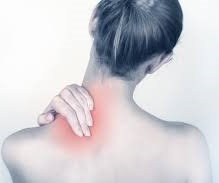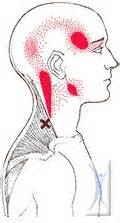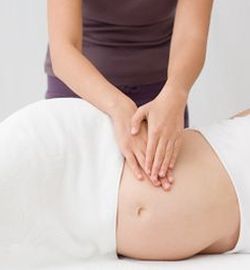 When you wake up with that awful “crick” in the neck, and assume you slept wrong, understand that what you are experiencing has likely been building up for a while. Neck pain is often a result of poor posture and chronic overload of the neck muscles. Over time, abnormalities form in the soft tissue of the neck, including the muscles and connective tissue. These abnormalities, such as trigger points, cause pain. Even when there are underlying conditions, such as arthritis and nerve irritation, protective muscle guarding will be present. Getting a massage can bring you substantial relief.
When you wake up with that awful “crick” in the neck, and assume you slept wrong, understand that what you are experiencing has likely been building up for a while. Neck pain is often a result of poor posture and chronic overload of the neck muscles. Over time, abnormalities form in the soft tissue of the neck, including the muscles and connective tissue. These abnormalities, such as trigger points, cause pain. Even when there are underlying conditions, such as arthritis and nerve irritation, protective muscle guarding will be present. Getting a massage can bring you substantial relief.
Trapezius Muscle Syndrome
 The trapezius is a large muscle that helps to extend and rotate your head. It also acts to depress and adduct (bring towards your spine) the scapula. It is often overloaded with excessive exercise or long hours at a computer where it must work overtime to support the head. Poor posture, especially when the head is too far in front of the body (forward head posture) plays a major role in trapezius dysfunction. The trapezius muscle is a very common source of neck and upper back pain.
The trapezius is a large muscle that helps to extend and rotate your head. It also acts to depress and adduct (bring towards your spine) the scapula. It is often overloaded with excessive exercise or long hours at a computer where it must work overtime to support the head. Poor posture, especially when the head is too far in front of the body (forward head posture) plays a major role in trapezius dysfunction. The trapezius muscle is a very common source of neck and upper back pain.
Active Trigger Points in this muscle can cause pain in:
Additional Symptoms include
- Pain that radiates to the temporal and occipital areas
- Jaw pain
- Pain when turning the neck to the opposite side
- Headaches that can range from mild to severe
- Restricted range of motion in the neck
- Pain in the middle back that may worsen at the end of a deep inhalation or sneeze
Levator Scapulae Muscle Syndrome
 The levator scapule muscle functions primarily to elevate the scapula and laterally flex the head to the same side. Additionally, it creates downward rotation of the scapula.
The levator scapule muscle functions primarily to elevate the scapula and laterally flex the head to the same side. Additionally, it creates downward rotation of the scapula.
This muscle can develop active trigger points that cause pain for a variety of reasons, including sleeping on your stomach with your head turned, long hours at the computer, poor posture and emotional stress.
Active Trigger Points in this muscle can cause pain:
-
- Over the shoulder
- In the lower part of the neck
- At the upper medial angle of the scapula
- Around the inside of the shoulder blade
Additional Symptoms
-
-
- May create headaches that have a referred character to them (you can tell that the
 headache is referred from the neck). The headaches are less severe than those created by the trapezius muscle.
headache is referred from the neck). The headaches are less severe than those created by the trapezius muscle. - Pain when turning the neck to the affected side
- Restricted range of motion in the neck
- The pain at the upper border of he scapula where the muscle attaches is often described as “shoulder pain”
- May create headaches that have a referred character to them (you can tell that the
-



